You are using an out of date browser. It may not display this or other websites correctly.
You should upgrade or use an alternative browser.
You should upgrade or use an alternative browser.
FDNY and NYC Firehouses and Fire Companies
- Thread starter mack
- Start date
- Status
- Not open for further replies.
- Joined
- Apr 13, 2012
- Messages
- 9,739
Some great pics right there mack. Looks like a multiple to me. Thank you for posting.
Fire building - 129 Pierrepont St - St Ann's School - converted from men's athletic club:
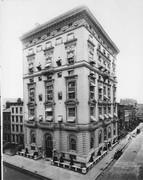
http://www.brooklynvisualheritage.org/crescent-club
Streetscapes/129 Pierrepont Street in Brooklyn Heights; 1906 Building, Once an Athletic Club, Now a School:
By CHRISTOPHER GRAY
Published: August 13, 2000
WHAT was once one of Brooklyn's most important clubs is now St. Ann's School, founded in 1965 at 129 Pierrepont Street with unconventional goals and described in its brochure as ''an amusement park'' in which the amusements include Aristophanes, Darwin and Baudelaire. Now the school is in the middle of a $1 million facade renovation for the building, which was completed in Brooklyn Heights in 1906 for the Crescent Athletic Club.
In the late 19th century, Brooklyn was a city, not a borough, and it had a growing network of civic, cultural and political organizations. The Crescent Athletic Club was organized in 1884 to play football in Prospect Park, and soon became a social and athletic organization. Such was the rapid growth of Brooklyn that within 10 years the club had a giant complex in Bay Ridge -- fields, a boathouse and a shingled country club -- along with a downtown building at 25 Pierrepont Street.
Brooklyn became part of New York City in 1898, and the club kept expanding. In 1902 The New York Tribune reported that the club, with membership limited to 1,500 and dues of $50 a year, was going to build a new clubhouse. The new building, designed by Frank Freeman, went up at Pierrepont and Clinton Streets across from the Long Island Historical Society (now the Brooklyn Historical Society).

http://www.brooklynvisualheritage.org/crescent-club
Streetscapes/129 Pierrepont Street in Brooklyn Heights; 1906 Building, Once an Athletic Club, Now a School:
By CHRISTOPHER GRAY
Published: August 13, 2000
WHAT was once one of Brooklyn's most important clubs is now St. Ann's School, founded in 1965 at 129 Pierrepont Street with unconventional goals and described in its brochure as ''an amusement park'' in which the amusements include Aristophanes, Darwin and Baudelaire. Now the school is in the middle of a $1 million facade renovation for the building, which was completed in Brooklyn Heights in 1906 for the Crescent Athletic Club.
In the late 19th century, Brooklyn was a city, not a borough, and it had a growing network of civic, cultural and political organizations. The Crescent Athletic Club was organized in 1884 to play football in Prospect Park, and soon became a social and athletic organization. Such was the rapid growth of Brooklyn that within 10 years the club had a giant complex in Bay Ridge -- fields, a boathouse and a shingled country club -- along with a downtown building at 25 Pierrepont Street.
Brooklyn became part of New York City in 1898, and the club kept expanding. In 1902 The New York Tribune reported that the club, with membership limited to 1,500 and dues of $50 a year, was going to build a new clubhouse. The new building, designed by Frank Freeman, went up at Pierrepont and Clinton Streets across from the Long Island Historical Society (now the Brooklyn Historical Society).
- Joined
- Mar 8, 2007
- Messages
- 5,392
I don't think it was L118, probably rearmount because it has twin light bars on the roof instead of one long bar.mack said:Chief - seems like it had to be a 2nd alarm or greater. A school. Tough building. NY Times reported 17 FDNY members injured.
Was the truck in picture 2 L 118?
- Joined
- Apr 13, 2012
- Messages
- 9,739
I would think it's 110 they're a close second due
- Joined
- Apr 13, 2012
- Messages
- 9,739
Yep 118 is a tiller
As for the street and truck placement, 118 would of been first due coming up off of Henry Street and making a left onto Pierrepont and going right up infront of the fire building.
110 would be coming in off of Tillary Street, and either did one of the two things (upon confirmation of 10-75) went up a one way street (Clinton) to park themselves on the right side of the fire bldg. at the corner of Clinton and Pierrepont (looks like that's what they did) - or they could of came up Henry St. as well and just repositioned themselves into that position on the side of the bldg. If I had to guess, I would say the first option of going up Clinton the wrong way, it's not that long of a stretch of one way road. Hope this included map helps: the red point is the fire bldg. 205/118 would be coming from the top left of the map near the BQE curve. 207/110/31 would be coming from the right of the map, or east. You can see Tillary Street in the map. Keep in mind that Clinton Street- the street on the right of the bldg. is a one way. Hope this educated guess helps.
P.S: this looked like some job. - Heavy fire out the windows of a multi-decade old school with around 6 floors. Tough one. Again, may FF D'Adamo RIP

As for the street and truck placement, 118 would of been first due coming up off of Henry Street and making a left onto Pierrepont and going right up infront of the fire building.
110 would be coming in off of Tillary Street, and either did one of the two things (upon confirmation of 10-75) went up a one way street (Clinton) to park themselves on the right side of the fire bldg. at the corner of Clinton and Pierrepont (looks like that's what they did) - or they could of came up Henry St. as well and just repositioned themselves into that position on the side of the bldg. If I had to guess, I would say the first option of going up Clinton the wrong way, it's not that long of a stretch of one way road. Hope this included map helps: the red point is the fire bldg. 205/118 would be coming from the top left of the map near the BQE curve. 207/110/31 would be coming from the right of the map, or east. You can see Tillary Street in the map. Keep in mind that Clinton Street- the street on the right of the bldg. is a one way. Hope this educated guess helps.
P.S: this looked like some job. - Heavy fire out the windows of a multi-decade old school with around 6 floors. Tough one. Again, may FF D'Adamo RIP

- Joined
- May 6, 2010
- Messages
- 17,455
I was driving R*2 that night...this was one of our normally assigned boxes as we were still on Carlton Av w/210....110 was in 1st Due position & had their Aerial up (incidentally the recently deceased CPT Dan Tracy was the Officer in 110 that night)...118's Tiller was in 2nd Due position coming into the block from Henry St but could not reach the Fire bldg since 224 was on a hyd West of the Fire bldg on the narrow street....105 was an additional LAD IFO the bldg....the Fire originated in a theater which had doors to the main stair both on the main ( lower level) & also on the balcony level of the theater......the library where we found Phil was on the floor above that....heavy Fire in the theater .....heavy smoke above in the library...the bldg which was 13 stories did have working standpipes w/standpipe hose attached which was utilized by SQ*1 along w/other handlines.....R*1 was also assigned when Phil was reported missing when a Roll Call was ordered by DV*10.
- Joined
- Apr 13, 2012
- Messages
- 9,739
Thanks for the info Chief. Tough fire to work at? I bet you'll never forget a job like this - question: is 110 still first due to this location or did they switch with 118?
L118 is and always was first due at this box. What the chief said was L 110 got into the first due position, not necessarily that they arrived first. E 224 blocked access for L 118.
From 1967 to 1973, I lived in the building immediately behind this building: 40 Clinton Street.
From 1967 to 1973, I lived in the building immediately behind this building: 40 Clinton Street.
- Joined
- Apr 13, 2012
- Messages
- 9,739
Oh thanks John, got it now.
- Joined
- Dec 1, 2009
- Messages
- 119
Chief, was he the one that turned the clock upside down?
- Joined
- May 6, 2010
- Messages
- 17,455
Yes earlier that tour.rayyorkson said:Chief, was he the one that turned the clock upside down?
Engine 224 firehouse 274 Hicks Street Brooklyn Hts, Brooklyn
Engine 24 BFD organized 153 Furman St 1886
Engine 24 BFD became Engine 24 FDNY 1898
Engine 24 became Engine 124 1899
Engine 124 moved to new firehouse 274 Hicks St 1904
Engine 124 became Engine 224 1913
Engine 224-2 organized 274 Hicks St at Engine 224 1917
Engine 224-2 disbanded 1918
Engine 24 BFD at 153 Furman St:
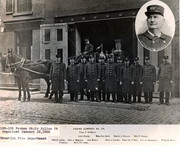
Engine 224 1950s at 274 Hicks St:
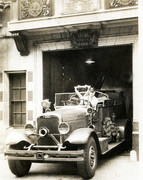
1932 Seagrave
274 Hicks St firehouse:
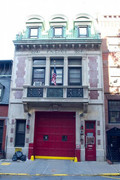
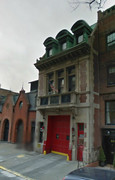
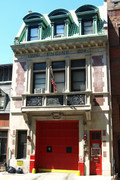
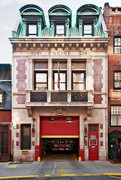
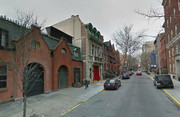
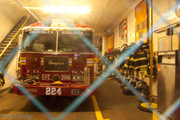
Engine 224:
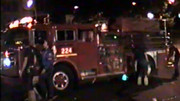
Engine 224 relocating:
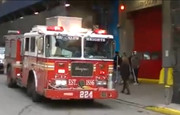
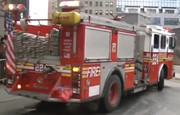
1992 - Engine 224 at Bronx 5th alarm:
*** FDNY *** OLD STUFF *** E224 & L124 Tonka Truck ON SCENE, 1992.
1992 - Engine 224 responding Washington Heights Riots:
*** FDNY*** ALF PUMPER E224 RIDE ALONG TO WASHINGTON HEIGHTS RIOTS - JULY 1992.
1992 Washington Heights Riots:
Washington Heights Protest, Pt. 2 (July 1992)
Engine 224 relocating:
FDNY - Engine 224 - Returning From Relocation - 11/20/12
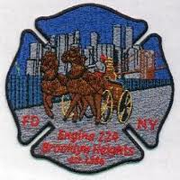
Engine 24 BFD organized 153 Furman St 1886
Engine 24 BFD became Engine 24 FDNY 1898
Engine 24 became Engine 124 1899
Engine 124 moved to new firehouse 274 Hicks St 1904
Engine 124 became Engine 224 1913
Engine 224-2 organized 274 Hicks St at Engine 224 1917
Engine 224-2 disbanded 1918
Engine 24 BFD at 153 Furman St:

Engine 224 1950s at 274 Hicks St:

1932 Seagrave
274 Hicks St firehouse:






Engine 224:

Engine 224 relocating:


1992 - Engine 224 at Bronx 5th alarm:
*** FDNY *** OLD STUFF *** E224 & L124 Tonka Truck ON SCENE, 1992.
1992 - Engine 224 responding Washington Heights Riots:
*** FDNY*** ALF PUMPER E224 RIDE ALONG TO WASHINGTON HEIGHTS RIOTS - JULY 1992.
1992 Washington Heights Riots:
Washington Heights Protest, Pt. 2 (July 1992)
Engine 224 relocating:
FDNY - Engine 224 - Returning From Relocation - 11/20/12

Engine 286/Ladder 135 firehouses 74-01 Cypress Hill St, 71-55 Metropolitan Ave and 66-44 Myrtle Avenue
Glendale, Queens
Engine 286 organized 74-01 Cypress Hill St in former volunteer Ivanhoe Ladder 10 firehouse 1913
Engine 286 moved to new firehouse 66-44 Myrtle Avenue 1913
Ladder 135 organized 71-55 Metropolitan Ave in former volunteer Fearless Ladder 7 firehouse 1913
Ladder 135 moved to 66-44 Myrtle Ave at Engine 286 1914
Ivanhoe Hook and Ladder 10 in front of Cyprus Hills St firehouse:

http://www.timesnewsweekly.com/sites/www.timesnewsweekly.com/files/archives/Archives2001/091301/NewFiles/OURNEIGH.html
Cyprus Hills St former firehouse currently private home:

Engine 286 organized in this firehouse in 1913
Fearless Ladder 7 in front of Metropolitan Ave firehouse:
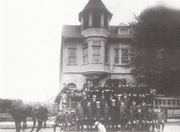
Ladder 135 organized in this firehouse in 1913
Organized in 1891, this volunteer company protected the village until displaced by the city?s Fire Department in September 1913. The building survived for years as a store until its demolition on August 15, 1986
66-44 Myrtle Avenue firehouse:
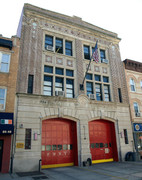
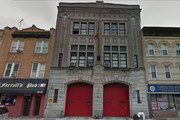
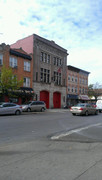
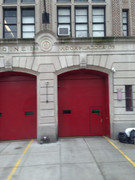

Engine 286:
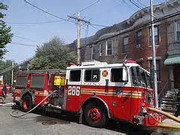
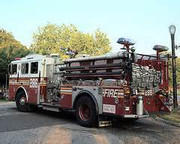
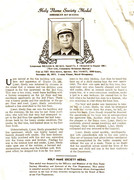
Ladder 135:
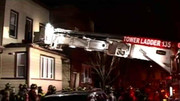
Engine 286/Ladder 135 Centennial:
http://www.nyc.gov/html/fdny/html/events/2013/092413a.shtml
Neighborhood - Glendale
http://www.glendaleny.com/glendale-ny-history/
http://forgotten-ny.com/2005/03/have-you-been-to-glendale/
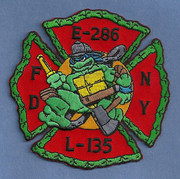
Glendale, Queens
Engine 286 organized 74-01 Cypress Hill St in former volunteer Ivanhoe Ladder 10 firehouse 1913
Engine 286 moved to new firehouse 66-44 Myrtle Avenue 1913
Ladder 135 organized 71-55 Metropolitan Ave in former volunteer Fearless Ladder 7 firehouse 1913
Ladder 135 moved to 66-44 Myrtle Ave at Engine 286 1914
Ivanhoe Hook and Ladder 10 in front of Cyprus Hills St firehouse:

http://www.timesnewsweekly.com/sites/www.timesnewsweekly.com/files/archives/Archives2001/091301/NewFiles/OURNEIGH.html
Cyprus Hills St former firehouse currently private home:

Engine 286 organized in this firehouse in 1913
Fearless Ladder 7 in front of Metropolitan Ave firehouse:

Ladder 135 organized in this firehouse in 1913
Organized in 1891, this volunteer company protected the village until displaced by the city?s Fire Department in September 1913. The building survived for years as a store until its demolition on August 15, 1986
66-44 Myrtle Avenue firehouse:





Engine 286:



Ladder 135:

Engine 286/Ladder 135 Centennial:
http://www.nyc.gov/html/fdny/html/events/2013/092413a.shtml
Neighborhood - Glendale
http://www.glendaleny.com/glendale-ny-history/
http://forgotten-ny.com/2005/03/have-you-been-to-glendale/

Engine 288/Ladder 136/Squad 288/HazMat 1/HazMat Support Queens/HazMat Technician Unit Queens - firehouses 61-55 Maspeth Ave and 56-29 68th St Maspeth, Queens
Engine 288 organized 61-55 Maspeth Avenue in former quarters of volunteer Maspeth Engine 4 1913
Engine 288 moved to new firehouse 56-29 68th St 1914
Engine 288 disbanded to form Squad 288 1998
Ladder 136 located at 56-29 Maspeth Avenue at Engine 288 1974-1976
HazMat 1 organized 56-29 Maspeth Avenue at Engine 288 1984
HazMat Support Queens organized 56-29 68th St at Squad 288 1998
HazMat Support Queens became HazMat Technician Unit Queens 1998
Note: Maspeth Engine 4 operated from 1890 to 1913 prior to FDNY:
http://www.junipercivic.com/juniperberryarticle.asp?nid=409


Former firehouse currently Frank Kowalinski American Legion Post 4:


56-29 68th St firehouse:
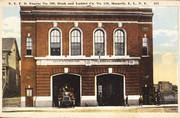
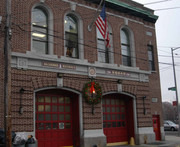
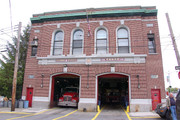
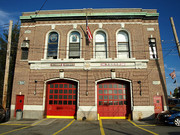
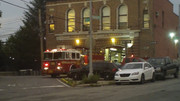
Squad 288:
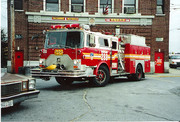
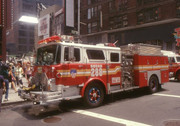
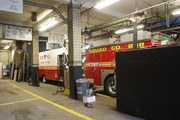


HazMat 1:
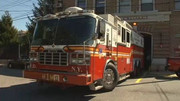

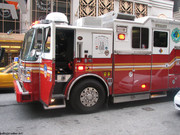

Squad 288 responding:
Fdny Squad 288
FDNY BRAND ****NEW**** SQUAD 288 RESPONDING INTO A 10-75
Squad 288/HazMat 1 responding:
FDNY Queens Squad 288 Responding, Haz Mat1
Squad 288:
FDNY UPCLOSE VIEW OF BRAND ****NEW**** SQUAD 288
Lest we forget - WTC:
Joseph Hunter 9-11 FDNY Squad 288

Squad 1 web site: http://www.fdnysquad288.com/
Landmark firehouse: http://queens.brownstoner.com/category/landmark-2/page/2/
Maspeth:
"The name "Maspeth" is derived from the name of "Mespeatches" Indians, one of the 13 main Indian tribes that inhabited Long Island. It is translated to mean "at the bad waterplace" relating to the many stagnant swamps that existed in the area. The original Indian village was located on rising ground east of Mt. Zion Cemetery.
Settlement began with the Dutch West India Company fur traders between 1621 and 1638 along Newtown Creek. The first formal colonization began in 1642 with the "Newtown Patent" which granted over 13,000 acres of land to those wishing to settle and develop the land now represented by all of Western Queens County. Twenty-eight English settlers, mostly of the Quaker religion, began the village of Maspeth.
Maspeth served as the center of the water trade with New Amsterdam and as the center for milling. Tide mills, that ground grain into flour, were established along Newtown Creek, Maspeth Creek, and their tributaries.
The first storekeepers to serve Maspeth were Nathanial Hazard and Francis T. White. Their foodstuffs and clothing stores were located at the Maspeth Town Dock, at 56th Terrace and Rust Street, during the late 1700's.
Great developments and growth of Maspeth took place after the Revolutionary War. Colonial roads were resurfaced with crushed oyster shells or with wooden planks. Early businesses included Peter Cooper's Glue Factory, Lawrence's Rope Works, Cord Meyer's Animal Carbon Plant, Sampson Oil Cloth Factory, James Inglis' Shirt Factory, A. Fisk Metal Casket Company, Mt. Clivet Cemetery, Laurel Hill Chemical Works, Haberman's Tin Factory, Gimpel Brothers Dairy, Beyer's Dairy, Gruebel Plumbing, Griff's Hardware, Maspeth Press and K-Ting Rope.
Today the population of Maspeth exceeds 50,000 people and the area provides employment for over 20,000 people." - Maspeth Chamber of Commerce
http://forgotten-ny.com/2013/07/maspeth-to-elmhurst-queens/

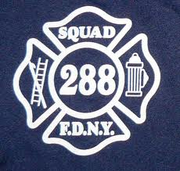

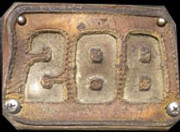
Engine 288 organized 61-55 Maspeth Avenue in former quarters of volunteer Maspeth Engine 4 1913
Engine 288 moved to new firehouse 56-29 68th St 1914
Engine 288 disbanded to form Squad 288 1998
Ladder 136 located at 56-29 Maspeth Avenue at Engine 288 1974-1976
HazMat 1 organized 56-29 Maspeth Avenue at Engine 288 1984
HazMat Support Queens organized 56-29 68th St at Squad 288 1998
HazMat Support Queens became HazMat Technician Unit Queens 1998
Note: Maspeth Engine 4 operated from 1890 to 1913 prior to FDNY:
http://www.junipercivic.com/juniperberryarticle.asp?nid=409


Former firehouse currently Frank Kowalinski American Legion Post 4:


56-29 68th St firehouse:





Squad 288:





HazMat 1:




Squad 288 responding:
Fdny Squad 288
FDNY BRAND ****NEW**** SQUAD 288 RESPONDING INTO A 10-75
Squad 288/HazMat 1 responding:
FDNY Queens Squad 288 Responding, Haz Mat1
Squad 288:
FDNY UPCLOSE VIEW OF BRAND ****NEW**** SQUAD 288
Lest we forget - WTC:
Joseph Hunter 9-11 FDNY Squad 288

Squad 1 web site: http://www.fdnysquad288.com/
Landmark firehouse: http://queens.brownstoner.com/category/landmark-2/page/2/
Maspeth:
"The name "Maspeth" is derived from the name of "Mespeatches" Indians, one of the 13 main Indian tribes that inhabited Long Island. It is translated to mean "at the bad waterplace" relating to the many stagnant swamps that existed in the area. The original Indian village was located on rising ground east of Mt. Zion Cemetery.
Settlement began with the Dutch West India Company fur traders between 1621 and 1638 along Newtown Creek. The first formal colonization began in 1642 with the "Newtown Patent" which granted over 13,000 acres of land to those wishing to settle and develop the land now represented by all of Western Queens County. Twenty-eight English settlers, mostly of the Quaker religion, began the village of Maspeth.
Maspeth served as the center of the water trade with New Amsterdam and as the center for milling. Tide mills, that ground grain into flour, were established along Newtown Creek, Maspeth Creek, and their tributaries.
The first storekeepers to serve Maspeth were Nathanial Hazard and Francis T. White. Their foodstuffs and clothing stores were located at the Maspeth Town Dock, at 56th Terrace and Rust Street, during the late 1700's.
Great developments and growth of Maspeth took place after the Revolutionary War. Colonial roads were resurfaced with crushed oyster shells or with wooden planks. Early businesses included Peter Cooper's Glue Factory, Lawrence's Rope Works, Cord Meyer's Animal Carbon Plant, Sampson Oil Cloth Factory, James Inglis' Shirt Factory, A. Fisk Metal Casket Company, Mt. Clivet Cemetery, Laurel Hill Chemical Works, Haberman's Tin Factory, Gimpel Brothers Dairy, Beyer's Dairy, Gruebel Plumbing, Griff's Hardware, Maspeth Press and K-Ting Rope.
Today the population of Maspeth exceeds 50,000 people and the area provides employment for over 20,000 people." - Maspeth Chamber of Commerce
http://forgotten-ny.com/2013/07/maspeth-to-elmhurst-queens/




Engine 17 - firehouse 91 Ludlow St Lower East Side DISBANDED
Engine 17 organized 91 Ludlow St in former quarters of volunteer Essex Engine 8 1865
Engine 17 relocated (unknown location) 1879
Engine 17 moved to new firehouse 91 Ludlow St 1880
Engine 17 moved to new firehouse 185 Broome St with Ladder 18/Bn 4 1939
Engine 17 moved to new firehouse 25 Pitt St with Ladder 18/Bn 4 1973
Engine 17 disbanded 1991
Engine 17-2 organized 91 Ludlow St at Engine 17 1917
Engine 17-2 disbanded 1918
Note - Volunteer Essex Engine 8 preceded FDNY Engine 17 protecting the Lower East Side. Engine 8 was organized in 1776 at Maiden Lane and relocated to Chatham St, Leonard St, Essex St, Ludlow St and Ludlow St. Engine 8 was disbanded in 1865.
Engine 17 at 91 Ludlow St:
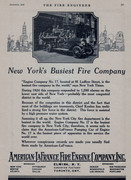
91 Ludlow St former firehouse:
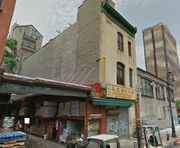
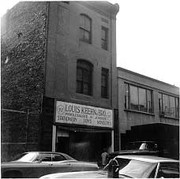
Engine 17:
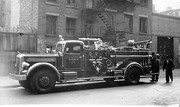
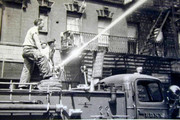
Engine 17 1960s:
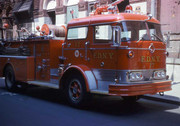
Engine 17 1970s:
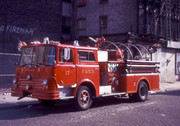
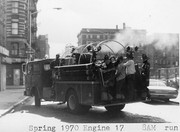
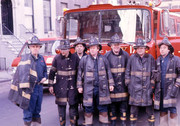
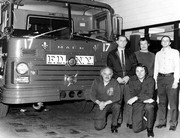
185 Broome St firehouse early 1970s:
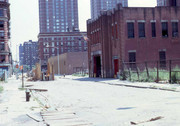
25 Pitt St firehouse mid 1970s:
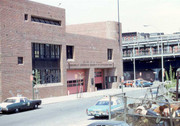
Engine 17 organized 91 Ludlow St in former quarters of volunteer Essex Engine 8 1865
Engine 17 relocated (unknown location) 1879
Engine 17 moved to new firehouse 91 Ludlow St 1880
Engine 17 moved to new firehouse 185 Broome St with Ladder 18/Bn 4 1939
Engine 17 moved to new firehouse 25 Pitt St with Ladder 18/Bn 4 1973
Engine 17 disbanded 1991
Engine 17-2 organized 91 Ludlow St at Engine 17 1917
Engine 17-2 disbanded 1918
Note - Volunteer Essex Engine 8 preceded FDNY Engine 17 protecting the Lower East Side. Engine 8 was organized in 1776 at Maiden Lane and relocated to Chatham St, Leonard St, Essex St, Ludlow St and Ludlow St. Engine 8 was disbanded in 1865.
Engine 17 at 91 Ludlow St:

91 Ludlow St former firehouse:


Engine 17:


Engine 17 1960s:

Engine 17 1970s:




185 Broome St firehouse early 1970s:

25 Pitt St firehouse mid 1970s:

Picture of Rescue 1's former firehouse - 530 W 43rd St - during firefighting operations in 1985 for adjoining warehouse 5 alarm alarm fire. Warehouse wall collapsed and destroyed Rescue 1's quarters.
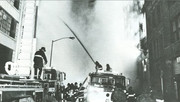
Firehouse is building to right with flag.
Radio recordings:
http://hfdradio.com/FDNY.htm
Rebuilt R 1 firehouse - 530 W 43rd St
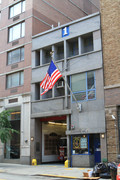

Firehouse is building to right with flag.
Radio recordings:
http://hfdradio.com/FDNY.htm
Rebuilt R 1 firehouse - 530 W 43rd St

Engine 306/Ladder 152/Battalion 53/Ladder 167 firehouse - 40-18 214th Place Bayside, Queens
Engine 306 organized 40-18 214th Place w/Ladder 152 1924
Engine 306 disbanded 1975
Engine 306 reorganized 40-18 214th Place 1975
Ladder 152 organized 40-18 214th Place w/Engine 306 1924
Ladder 152 moved to new firehouse 61-20 Utopia Parkway w/Engine 299 1960
Battalion 53 organized 40-18 214th Place at Engine 306 1930
Battalion 53 moved to 64-04 Springfield Blvd at Engine 326 1994
Ladder 167 relocation to 40-18 214th Place at Engine 306
Note: Bayside was originally protected by The Enterprise Hook and Ladder Company No. 1, incorporated on December 20, 1890. By 1902 a Certificate of Incorporation was issued to the Bayside Fire Company and the two organizations consolidated into the Bayside Fire Department. In order to accommodate their growing organization, this fire house was built in 1912-1913 and dedicated on Fireman's Day, September 1, 1913. It was located near the public library on Elsie Place (41st Avenue) and First Street (214th Place).
Bayside Volunteer Fire Department new firehouse 1913:
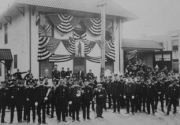
1916:
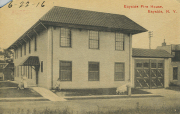
After the City of New York took over fire protection services for Bayside in 1924 the building was used by the local Democratic party and later the 111th Police Precinct.
Bayside Volunteer Fire Department history: http://www.hoflink.com/~bayside/bysdfire.html
1924 FDNY orders disbanding Bayside Volunteer Fire Department companies;
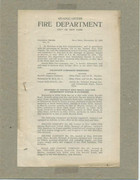
Firehouse 40-18 214th Place:
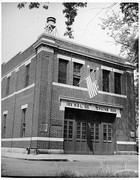
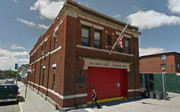


Engine 306:
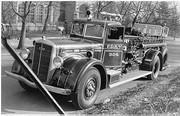
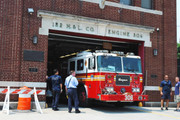
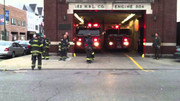
FDNY - 11/8/12 - Queens - Ladder 167 - Engine 306 - Responding
FDNY ENGINE 306 HAULING
FDNY ENGINE 306 RESPONDING
FDNY ENGINE 306 RESPONDING
http://www.qgazette.com/news/2011-07-20/Features/Bayside_Celebrates_Preservation_Of_Engine_306.html
Bayside:
http://forgotten-ny.com/2012/03/from-flushing-to-bayside/
Ft Totten:
"Originally farmland, the United States Army purchased the first 110 acres of the Willets Point peninsula on May 16, 1857 for $200,000. The unexpectedly high cost of land needed to defend New York City?s eastern gateway from assault by the Confederate south caused a scandal in Congress, which generated an investigation. The remaining 26.35 acres were purchased on April 14, 1863 fro $57,000.
The only structures on Willets Point at the time of its purchase by the Army were a farmhouse that had also served as a tavern, a double house facing the water, which was only occupied during the summer and a stable standing near the salt marsh that separated the point from the mainland. Of these structures, only the 1829 farmhouse remains, awaiting restoration where it was moved adjacent to the present day Officers? Club.
During 1857, Congress appropriated $155,0000 for the building of the fort at Willets Point, but construction did not actually begin until 1862. By that time, the Civil War was in its second year, and the point was already a busy military base. New York was the leading hub of the country?s transportation systems, particularly railroads and shipping. ?Staging areas? were needed in the New York area where men could be temporarily assembled and trained while they were waiting for transportation to the front. The undeveloped Army property at Willets Point was ideal for this purpose.
Beginning with the Army Corps of Engineers, subsequent units passing through the fort in the early days of the Civil War were: the 2nd Main Infantry, the 15th New York Volunteer Engineers and the 6th New York Infantry also known as the ?United States Chasseurs?.
The names of two future leading figures in the Confederacy are linked with the beginnings of Fort Totten. It is believed that Robert E. Lee, as an officer in the Army Engineers, was responsible for some of the preliminary design work for the fort, and it was Jefferson Davis who, as Secretary of War, made the presentation before Congress requesting approval for its construction. Colonel William Petit Trowbridge of Astoria, Queens was placed in charge of construction of the fort to include a wharf and battlement foundations extending downward 12 feet below the normal water level of the Sound. Approximately 400 civilian construction workers were employed earning up to $3 a day.
If the fort as originally designed had been completed it would have been the most formidable structure in the New York area to include five tiers of guns and five sides to enclose a parade ground in the center. Walls were eight feet thick built of gray granite blocks quarried in the State of Maine and delivered on ships and barges. Ironwork included the armored ?Totten shutters? for the gun ports with curved tracks set into the floors to train the guns. Only a two sided, two level battery was actually completed facing the Sound with the upper casemate left unroofed as seen today. Construction ceased in 1864 as the war drew to a close.
Wooden barracks were constructed to house up to 3000 troops. Near the end of the war they were used to house the Grant General Hospital, a facility that treated over 5000 sick and wounded Northern soldiers. Injured Confederate soldiers were confined to Hart Island across the Sound from Willets Point.
Colonel Henry Larcom Abbot, Chief of the Engineer Battalion which relocated from West Point was commander of Fort Totten after the Civil War. He was a great believer in military education. He found the Point to be well suited for the practical instruction of the troops in works of siege including land mining, bridge building and reconnaissance. His program received official recognition as the Engineering School of Application. Many wartime experiments were performed at the Point as a precursor of what was to become its primary purpose in the coming decades. A possible early submarine model was tested off the point. A laboratory set up on the Sound developed and tested electrically detonated mines controlled from a position on shore. Examples of these mines site atop the entrance pillars of Fort Totten today. Devices to measure the force of underwater explosions, strength of mooring cables, insulated wires to carry electrical charges underwater, and ways to test the system without detonation were all developed at the Fort Totten laboratory. Congress favored the use of submarine mines ?torpedoes? as a relatively inexpensive form of harbor defense.
Another defensive weapon developed at Willets Point was the coast defense mortar; short cannons firing at a steep angle using pointed shells to descend almost vertically thereby penetrating the lightly armored deck of an approaching warship. In 1885, after a review of the country?s aging coastal defenses, many of the innovations developed at Willets Point were adopted under the ?Endicott System?. In 1898, by order of President McKinley, the Fort at Willets Point was renamed Fort Totten, in honor of General Joseph Totten who had designed the casemate system in use at the fort.
In 1902, the Engineers were replaced with the Coast Artillery after which, the School of Application was moved to Washington DC. During the First World War, the Fort served as a major staging point for troops en route to the war zone. In 1922, the first anti-aircraft unit arrived at Fort Totten. During World War II the Fort was made the headquarters of the Antiaircraft Command of the Eastern Defense Command. In 1944 it was named headquarters of the North Atlantic region of the Air Transport Command, which handled troop movements, by air through LaGuardia Field.
The Fort had been the location of major Army hospitals since the Civil War, frequently home to medical research facilities. Stationed here was Major Walter Reed, who later played a primary role in conquering yellow fever. In 1947, the Armed Forces Medical Research Laboratory was established at the Fort to develop or improve medical equipment for the specific needs of the military.
After more than 100 years of service to our country, Congress approved the closing of Fort Totten in September 1995. The Army Reserve Command remains, although greatly reduced in size. The Coast Guard has relocated to Kings Point. The New York City Fire Department controls one third of the property as a training center and the New York City Department of Parks and Recreation manages the final third of the property as a public waterfront park. The 1870 Officers? Club is now the home of the Bayside Historical Society."
Bayside Historical Society
http://en.wikipedia.org/wiki/Fort_Totten_(Queens)
Ft Totten - current home to FDNY EMS Academy:
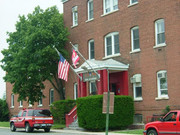
A Day at the FDNY EMS Academy
Engine 306 web page:
http://engine306.tripod.com/index.html
Engine 306 LODD Firefighter Antonio Assante - 1952 - barn fire - arson case solved 43 years after fire:
http://www.nydailynews.com/archives/news/ashes-memory-fire-prober-solves-40-yr-old-arson-article-1.682910
Engine 306 LODD: Firefighter Charles R. Nagle
Aug 11, 1926 65 Bell Blvd
Overcome by gass in cesspool rescuing workers

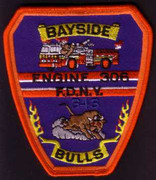
Engine 306 organized 40-18 214th Place w/Ladder 152 1924
Engine 306 disbanded 1975
Engine 306 reorganized 40-18 214th Place 1975
Ladder 152 organized 40-18 214th Place w/Engine 306 1924
Ladder 152 moved to new firehouse 61-20 Utopia Parkway w/Engine 299 1960
Battalion 53 organized 40-18 214th Place at Engine 306 1930
Battalion 53 moved to 64-04 Springfield Blvd at Engine 326 1994
Ladder 167 relocation to 40-18 214th Place at Engine 306
Note: Bayside was originally protected by The Enterprise Hook and Ladder Company No. 1, incorporated on December 20, 1890. By 1902 a Certificate of Incorporation was issued to the Bayside Fire Company and the two organizations consolidated into the Bayside Fire Department. In order to accommodate their growing organization, this fire house was built in 1912-1913 and dedicated on Fireman's Day, September 1, 1913. It was located near the public library on Elsie Place (41st Avenue) and First Street (214th Place).
Bayside Volunteer Fire Department new firehouse 1913:

1916:

After the City of New York took over fire protection services for Bayside in 1924 the building was used by the local Democratic party and later the 111th Police Precinct.
Bayside Volunteer Fire Department history: http://www.hoflink.com/~bayside/bysdfire.html
1924 FDNY orders disbanding Bayside Volunteer Fire Department companies;

Firehouse 40-18 214th Place:




Engine 306:



FDNY - 11/8/12 - Queens - Ladder 167 - Engine 306 - Responding
FDNY ENGINE 306 HAULING
FDNY ENGINE 306 RESPONDING
FDNY ENGINE 306 RESPONDING
http://www.qgazette.com/news/2011-07-20/Features/Bayside_Celebrates_Preservation_Of_Engine_306.html
Bayside:
http://forgotten-ny.com/2012/03/from-flushing-to-bayside/
Ft Totten:
"Originally farmland, the United States Army purchased the first 110 acres of the Willets Point peninsula on May 16, 1857 for $200,000. The unexpectedly high cost of land needed to defend New York City?s eastern gateway from assault by the Confederate south caused a scandal in Congress, which generated an investigation. The remaining 26.35 acres were purchased on April 14, 1863 fro $57,000.
The only structures on Willets Point at the time of its purchase by the Army were a farmhouse that had also served as a tavern, a double house facing the water, which was only occupied during the summer and a stable standing near the salt marsh that separated the point from the mainland. Of these structures, only the 1829 farmhouse remains, awaiting restoration where it was moved adjacent to the present day Officers? Club.
During 1857, Congress appropriated $155,0000 for the building of the fort at Willets Point, but construction did not actually begin until 1862. By that time, the Civil War was in its second year, and the point was already a busy military base. New York was the leading hub of the country?s transportation systems, particularly railroads and shipping. ?Staging areas? were needed in the New York area where men could be temporarily assembled and trained while they were waiting for transportation to the front. The undeveloped Army property at Willets Point was ideal for this purpose.
Beginning with the Army Corps of Engineers, subsequent units passing through the fort in the early days of the Civil War were: the 2nd Main Infantry, the 15th New York Volunteer Engineers and the 6th New York Infantry also known as the ?United States Chasseurs?.
The names of two future leading figures in the Confederacy are linked with the beginnings of Fort Totten. It is believed that Robert E. Lee, as an officer in the Army Engineers, was responsible for some of the preliminary design work for the fort, and it was Jefferson Davis who, as Secretary of War, made the presentation before Congress requesting approval for its construction. Colonel William Petit Trowbridge of Astoria, Queens was placed in charge of construction of the fort to include a wharf and battlement foundations extending downward 12 feet below the normal water level of the Sound. Approximately 400 civilian construction workers were employed earning up to $3 a day.
If the fort as originally designed had been completed it would have been the most formidable structure in the New York area to include five tiers of guns and five sides to enclose a parade ground in the center. Walls were eight feet thick built of gray granite blocks quarried in the State of Maine and delivered on ships and barges. Ironwork included the armored ?Totten shutters? for the gun ports with curved tracks set into the floors to train the guns. Only a two sided, two level battery was actually completed facing the Sound with the upper casemate left unroofed as seen today. Construction ceased in 1864 as the war drew to a close.
Wooden barracks were constructed to house up to 3000 troops. Near the end of the war they were used to house the Grant General Hospital, a facility that treated over 5000 sick and wounded Northern soldiers. Injured Confederate soldiers were confined to Hart Island across the Sound from Willets Point.
Colonel Henry Larcom Abbot, Chief of the Engineer Battalion which relocated from West Point was commander of Fort Totten after the Civil War. He was a great believer in military education. He found the Point to be well suited for the practical instruction of the troops in works of siege including land mining, bridge building and reconnaissance. His program received official recognition as the Engineering School of Application. Many wartime experiments were performed at the Point as a precursor of what was to become its primary purpose in the coming decades. A possible early submarine model was tested off the point. A laboratory set up on the Sound developed and tested electrically detonated mines controlled from a position on shore. Examples of these mines site atop the entrance pillars of Fort Totten today. Devices to measure the force of underwater explosions, strength of mooring cables, insulated wires to carry electrical charges underwater, and ways to test the system without detonation were all developed at the Fort Totten laboratory. Congress favored the use of submarine mines ?torpedoes? as a relatively inexpensive form of harbor defense.
Another defensive weapon developed at Willets Point was the coast defense mortar; short cannons firing at a steep angle using pointed shells to descend almost vertically thereby penetrating the lightly armored deck of an approaching warship. In 1885, after a review of the country?s aging coastal defenses, many of the innovations developed at Willets Point were adopted under the ?Endicott System?. In 1898, by order of President McKinley, the Fort at Willets Point was renamed Fort Totten, in honor of General Joseph Totten who had designed the casemate system in use at the fort.
In 1902, the Engineers were replaced with the Coast Artillery after which, the School of Application was moved to Washington DC. During the First World War, the Fort served as a major staging point for troops en route to the war zone. In 1922, the first anti-aircraft unit arrived at Fort Totten. During World War II the Fort was made the headquarters of the Antiaircraft Command of the Eastern Defense Command. In 1944 it was named headquarters of the North Atlantic region of the Air Transport Command, which handled troop movements, by air through LaGuardia Field.
The Fort had been the location of major Army hospitals since the Civil War, frequently home to medical research facilities. Stationed here was Major Walter Reed, who later played a primary role in conquering yellow fever. In 1947, the Armed Forces Medical Research Laboratory was established at the Fort to develop or improve medical equipment for the specific needs of the military.
After more than 100 years of service to our country, Congress approved the closing of Fort Totten in September 1995. The Army Reserve Command remains, although greatly reduced in size. The Coast Guard has relocated to Kings Point. The New York City Fire Department controls one third of the property as a training center and the New York City Department of Parks and Recreation manages the final third of the property as a public waterfront park. The 1870 Officers? Club is now the home of the Bayside Historical Society."
Bayside Historical Society
http://en.wikipedia.org/wiki/Fort_Totten_(Queens)
Ft Totten - current home to FDNY EMS Academy:

A Day at the FDNY EMS Academy
Engine 306 web page:
http://engine306.tripod.com/index.html
Engine 306 LODD Firefighter Antonio Assante - 1952 - barn fire - arson case solved 43 years after fire:
http://www.nydailynews.com/archives/news/ashes-memory-fire-prober-solves-40-yr-old-arson-article-1.682910
Engine 306 LODD: Firefighter Charles R. Nagle
Aug 11, 1926 65 Bell Blvd
Overcome by gass in cesspool rescuing workers


- Joined
- Mar 8, 2007
- Messages
- 5,392
Some repurposed NYC firehouses: http://untappedcities.com/2014/02/13/7-repurposed-fire-stations-in-nyc/
- Status
- Not open for further replies.
